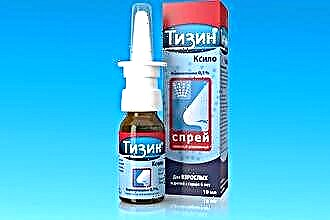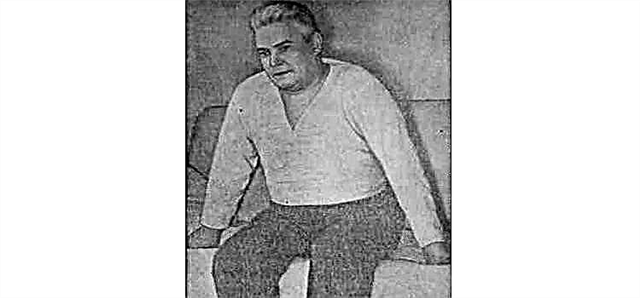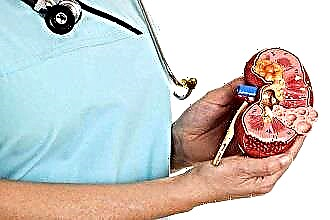 Why is smear diagnostics performed?
Why is smear diagnostics performed?
- confirmation of the infectious origin of tonsillitis, sinusitis, meningitis, whooping cough and other diseases;
- search for Staphylococcus aureus, which is the cause of purulent lesions of the skin (furunculosis, pyoderma);
- to exclude diphtheria in the absence of Leffler's bacillus in smears;
- for the diagnosis of stenosing laryngitis, as well as mononucleosis.
For prophylactic purposes, taking a smear from the throat is shown:
- people who have had contact with a sick person to determine the carrier of bacteria;
- for employment in the food industry, medical and childcare institutions;
- children before visiting educational institutions, sports activities, a pool to prevent an epidemic;
- before hospitalization, in the preoperative period.
Pregnant women must be examined to establish the risk of developing an infectious disease, as well as the appearance of complications from the fetus.
Preparatory stage
In order for the analysis to provide the most accurate results, it is necessary to adhere to some recommendations. Preparation includes:
- 5 days before the examination, it is forbidden to take antibacterial drugs, which will allow the reproduction of pathogenic microbes to resume;
- 3 days before the diagnosis, the use of rinsing solutions, as well as an antiseptic spray, will be canceled. They reduce the number of pathogenic microbes, which makes diagnosis difficult;
- a throat swab is performed on an empty stomach;
- before the study, chewing gum, drinks are prohibited, it is undesirable to brush your teeth.
Material collection process
It is possible to facilitate the process of taking a swab from the throat by observing a certain algorithm of actions. The patient needs to tilt his head back a little, open the oral cavity as much as possible in order to show the specialist the posterior pharyngeal wall.
The tongue is fixed with a spatula to the bottom of the mouth. A throat swab is taken with a sterile swab located at the end of the elongated loop. Take a swab carefully, without touching the swab to other surfaces of the oral cavity.
The collected material with a swab is placed in a test tube, after which it is transported to the laboratory in the first 90 minutes. The algorithm must be followed to obtain reliable research results.
When a sterile swab is carried over the surface of the posterior pharyngeal wall, the patient may experience an emetic urge, especially with a pronounced gag reflex.
Microscopy and bacterial culture
Microscopic examination is carried out before bacterial inoculation to determine the cellular composition in order to foresee which colonies can grow on the nutrient medium.
Microscopy is performed by Gram staining, after which cells are visualized under a microscope. Sowing is carried out in a specific environment, since each type of microorganism requires compliance with pH and humidity levels.
Sowing on the flora ensures the growth of colonies, on the basis of the shape and shade of which the type of microorganisms is established. The main task of culture media is to provide respiration and nutrition of microbes for rapid growth and reproduction.
The material is sown in sterile laboratory conditions in compliance with the rules of asepsis. The medical staff should not forget about protective equipment, since biological material can be extremely dangerous in terms of infectiousness.
The inoculation results are evaluated daily, but the final conclusions are made after a week, analyzing the color, shape and other characteristics of the colonies.
Particular attention is paid to the antibioticogram, which is performed by covering the grown colonies with circles soaked in an antibacterial agent. If pathogenic microbes are sensitive to a specific antibiotic, the growth of colonies is inhibited. In cases where colonies grow under antibacterial action, the drug is considered ineffective. Based on these results, the doctor prescribes antibiotic therapy, which helps to cope with the disease.
Diagnostic results
What does the smear show? The flora of the mucous membrane consists of various microorganisms. A smear from the pharynx on the microflora shows the number of pathogenic and opportunistic microbes. In a small number of pathogenic bacteria do not cause the development of the disease, as well as opportunistic. However, with a decrease in the body's immune defense against the background of severe general hypothermia, exacerbation of chronic pathology, colds or in the postoperative period, opportunistic bacilli begin to multiply intensively, provoking the development of the disease.
Normally, infections such as streptococcus, Escherichia coli or Neisseria can be found in the flora. This is considered a variant of the norm if their number does not exceed the permissible norm, and there are no clinical signs of an infectious disease.
It is worth noting that one should not undertake their destruction, since after the end of taking antibacterial agents, they again repopulate part of the microflora of the mucous membranes.
When a doctor orders a test, he expects to receive results to confirm the presence or absence of certain pathogens that may have triggered the patient's symptoms.
Decoding a smear from a pharynx includes the name of microorganisms, opposite which their number is indicated, which is expressed in special units. They became known as CFU / ml, which indicates the number of bacterial pathogens growing in one liter of the nutrient medium. Abbreviated CFU  called the colony-forming unit.
called the colony-forming unit.
If the analysis showed a microbial content of ten to the fourth degree, this refers to a variant of the norm. When the result has exceeded this level, for example, ten to the fifth power, then intensive microbial growth is confirmed. An imbalance between beneficial and harmful bacteria is a dysbiosis, which leads to the development of the disease.
If the analysis showed "confluent growth" of microorganisms, it is worth suspecting a large number of bacilli, which form colonies upon fusion. An antibioticogram is also indicated in the results of bacterial culture. It lists antibacterial agents in the form of a tablet. Each antibiotic has a "+" sign next to it:
- one "+" indicates a low level of sensitivity of the pathogenic microbe in relation to this type of antibacterial agent;
- two "+" indicates an average level;
- 3 "+" - high sensitivity.
If the pathogen has no sensitivity to a particular antibiotic, then a "tick" is put on the contrary. This means that the choice of this antibacterial drug is not advisable, since the therapeutic effect from its use will not be observed.
The analysis, or rather its results, are recorded on a special form. The type of microorganisms is indicated in Latin letters:
- a negative result is considered when the throat swab does not have fungal and bacterial flora. In this case, the doctor should suspect a viral infectious pathology.
- a positive answer indicates the presence of the growth of pathogenic / opportunistic microbes that can cause an infectious and inflammatory process in the mouth, nasopharynx. When there is an increase in the fungal flora, candidiasis develops in the oral cavity.
We emphasize that normal microflora can consist of fungi, Klebsiella pneumonia, diphtheria, bacteroids, actinomycetes, pseudomonads, non-pathogenic Neisseria, Escherichia coli, streptococci, meningococci, and also epidermal staphylococcus.
As for pathogens, it is worth highlighting Listeria, meningo-, pneumococcus, Leffler's bacillus, hemolytic streptococcus,  Branchamella, Haemophilus influenzae, Bordetella, Staphylococcus aureus, and fungi.
Branchamella, Haemophilus influenzae, Bordetella, Staphylococcus aureus, and fungi.
A throat swab gives an indication of the presence of pathogenic microbes that may have caused the development of the disease. Based on the results of the study, the doctor determines which treatment will be most effective in this case.
Throat swab – a fast and painless procedure that provides a significant aid in the diagnosis of infectious diseases.



